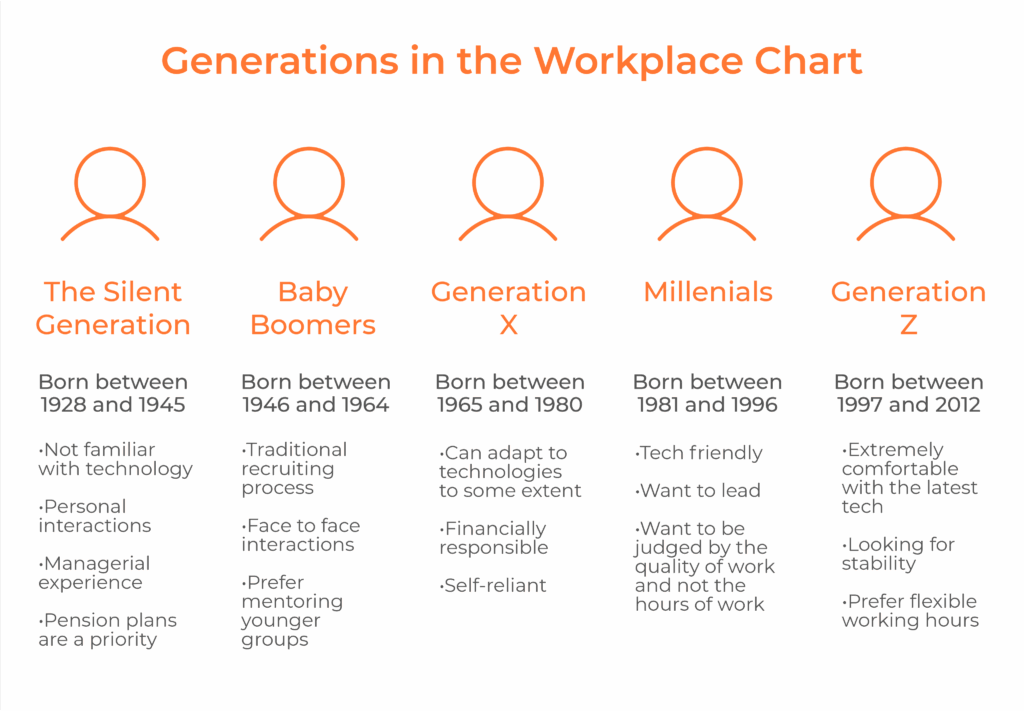We’ve all heard stories about children surpassing their parents in academic achievements, or students outshining their teachers. These scenarios happen quite frequently.
In today’s article, I will discuss the concept of reverse mentoring and highlight the top 3 benefits of implementing reverse mentoring within an IT company.
While children and students follow traditional learning paths, parents and teachers often find themselves learning as well. This exchange of knowledge from younger to older generations is known as reverse mentoring.
The term reverse mentoring was coined in the late 1990s by Jack Welch, CEO of General Electric, who started a program pairing his top executives with younger employees to help them navigate the internet and new technologies. Today, a similar dynamic is occurring as Gen Z and Millennials enter the IT workforce in larger numbers.
Rise of reverse mentoring
The rise of reverse mentoring coincides with the demographic shift of Gen Z and Millennials in IT teams. By 2025, millennials will make up almost 75% of the workforce. These younger generations are not only the most diverse in history but also the first digital natives. They have grown up during a period of rapid technological advancement, bringing fresh perspectives, different working styles, and technological fluency to the workforce.
As Baby Boomers retire and Millennials and Gen Z assume more significant roles, the transfer of knowledge and skills has become a two-way street. Younger workers are now positioned to mentor their more experienced colleagues in areas such as digital literacy, social media, and new AI technologies, marking the beginning of a new era of reverse mentoring.

A 2019 study in the Harvard Business Review demonstrated that reverse mentoring is in use by major brands including Johnson & Johnson, Mars, Cisco, and many others. More interestingly, fashion brands like Gucci and Prada introduced “shadow boards”. Shadow board is a situation when a group of non-executive junior employees works with senior executives on strategic initiatives. Also, a form of reverse mentoring. The idea is to get insights from younger employees.
Top 3 benefits of reverse mentoring
1. Bridging the generational gap
Reverse mentoring helps bridge the generational gap in IT companies by fostering better understanding and communication between younger and older employees. Younger mentors can introduce senior executives to the latest technologies, trends, and digital tools. It enhances their digital literacy and keeping them updated with industry advancements.
This dynamic not only modernizes the leadership approach but also ensures that the company remains competitive.
2. Promoting diversity and inclusion
Reverse mentoring plays a significant role in promoting diversity and inclusion within IT organizations. Younger employees, often from more diverse backgrounds, bring fresh perspectives and ideas that challenge traditional thinking. This exchange helps senior leaders understand and appreciate diverse viewpoints, fostering a more inclusive workplace culture.
Additionally, it empowers younger employees by giving them a voice and demonstrating that their insights are valued, which can enhance their engagement and retention.
3. Enhancing leadership and soft skills
For younger mentors, reverse mentoring provides an invaluable opportunity to develop leadership and soft skills such as communication, empathy, and strategic thinking. By mentoring senior colleagues, they gain confidence and experience in guiding and influencing others, crucial skills for career advancement.
For senior leaders, it offers a chance to stay grounded, adaptable, and open to new ideas, thus enhancing their overall effectiveness.
Strengthening organizational culture
Reverse mentoring not only bridges gaps and fosters diversity but also plays a crucial role in strengthening organizational culture. By facilitating open dialogues across different levels of the organization, it encourages a culture of continuous learning and mutual respect.

Younger employees feel more valued and integrated into the company, leading to higher job satisfaction and loyalty. Meanwhile, senior leaders stay updated with technological advancements and modern workplace trends, making the organization more adaptable and forward-thinking.
By implementing reverse mentoring, IT companies can create a dynamic and inclusive environment that leverages the strengths of all employees, ensuring continuous growth and adaptability in a rapidly changing industry.
FAQ
How can reverse mentoring improve technological adoption in an IT company?
What are some challenges of implementing reverse mentoring in IT companies?
How does reverse mentoring benefit the mentors themselves?
Chapters
- Rise of reverse mentoring
- Top 3 benefits of reverse mentoring
- Strengthening organizational culture
- FAQ



